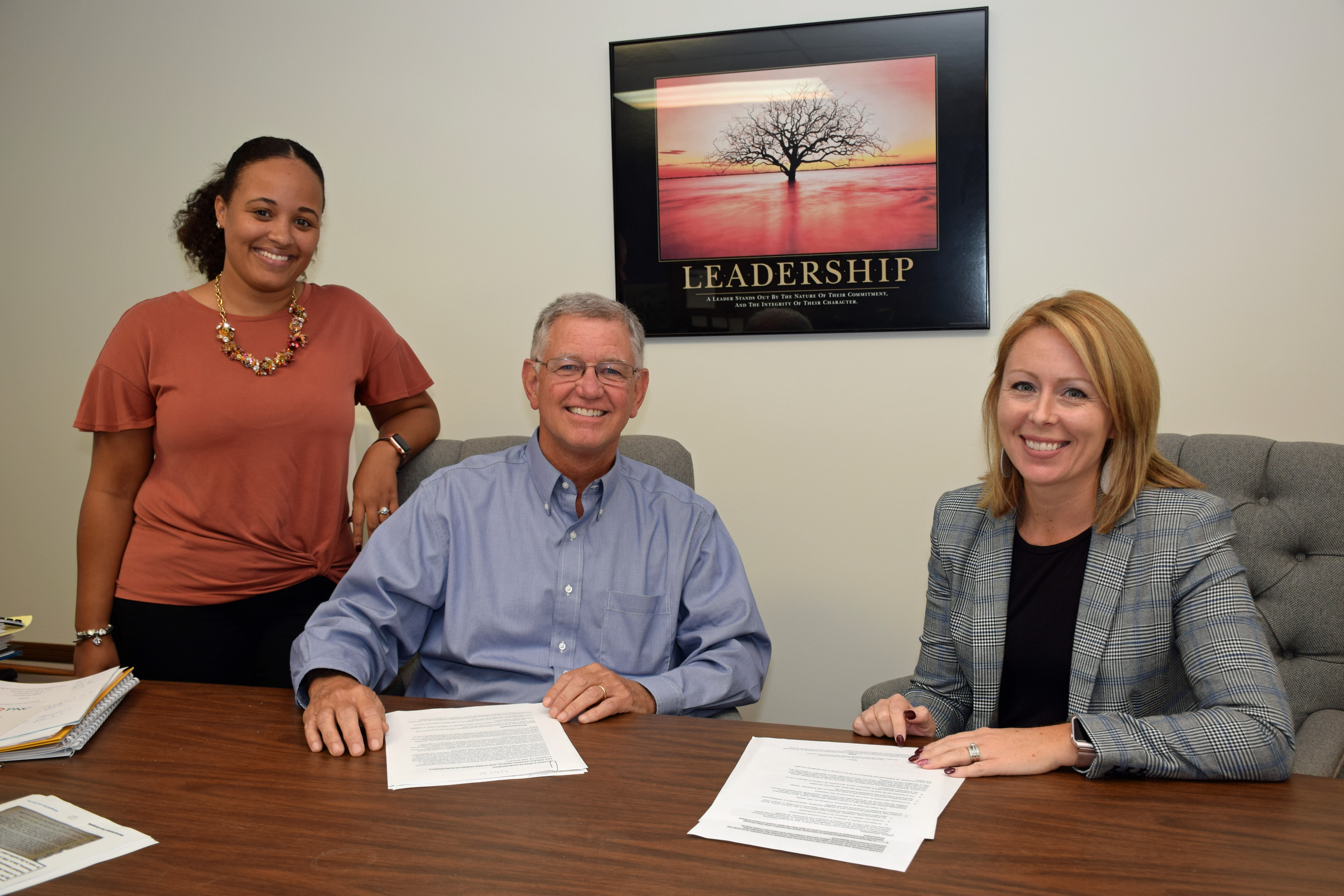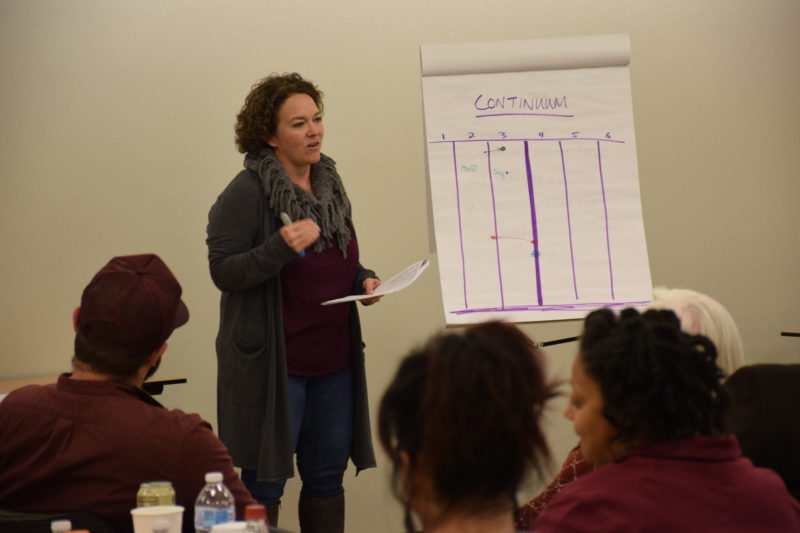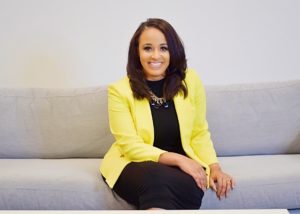Building Board Diversity in Springfield, and Beyond
In October 2020, Forefront and our partners in Sangamon County launched the Building Board Diversity (BBD) pledge: an opportunity for nonprofits and companies in Central Illinois to commit to expanding the makeup of nonprofit boards. We sat down with Raychel McBride and Sarah Tapscott, two leaders of Building Board Diversity, to learn more about the initiative, the new pledge, and their plans for the future.
This conversation has been edited and condensed for clarity. Listen to the full conversation here.
How did Building Board Diversity begin?
Sarah Tapscott:
Building Board Diversity began with a conversation that I had with our United Way in Springfield. I sat down with John Kelker, the President of United Way of Central Illinois, to chat about how to increase recruitment of board members with our local nonprofits, and the lack of diversity when it comes to recruitment. From that conversation, we engaged community stakeholders, including Raychel, and began having meetings about increasing the diversity amongst our nonprofit boards in Springfield. We went through different trainings with local nonprofit executive directors. We did some community training to help change the culture and the way boards thought about diversity – not just black and white, but diversity across the board. Since then, these meetings and trainings have grown into the launching of the Building Board Diversity webpages and our pledges.

Raychel McBride:
I was invited to be a part of the task force when it first started. I remember getting the email from someone within my network, going to a meeting, and having really great conversations. We weren’t sure what Building Board Diversity would become. We knew that everybody was passionate about making improvements. We also knew we were passionate about making sure that our boards reflected the communities they were serving, and that our communities were being included in the conversation.
Would you walk us through the Building Board Diversity Pledge and how it works?
Raychel McBride:
The pledge came about from looking at other organizations that were doing something similar on the corporate side. At the time I was working with an insurance company that had just taken a national pledge called CEO Action, and there’s a lot of local pledges as well. From that, we thought, “Why not ask for a commitment that also requires action?”
The pledge is for nonprofits, but it’s also for employers. We realized right away that there were a lot of nonprofits ready to say: “Yes, I’ll do what it takes. I’ll attend training as a part of the solution. I will do diversity audits to see where I have gaps, be transparent. I will go out, have conversations, and let people know that we have board openings.” But at the end of the day, we still need community members that want to volunteer and serve on boards.
Sarah Tapscott:
Forefront was hosting a Board 101 training. We started to think, “Well, how can we even get people into the room to do these trainings?” That sparked the conversation about the employer’s side. That’s where we realized we really needed a pledge from them as well, to have a volunteer policy, to allow those employees to take time away from work, to serve on a board, go to a “Board 101” training, and get involved with the community.
Companies tend to give the C suite or the higher–level employees time off to serve on nonprofit boards. We wanted to increase access for all employees to serve on boards. You have the same CEO from a bank serving on four or five different boards and their time gets divided. We want to make sure that we have a nice bench of board members from every part of Springfield, every industry, every level of career.
What need is Building Board Diversity addressing in your community?
Sarah Tapscott:
Our nonprofit boards are not representative of the constituents or the clients that the nonprofits are serving. When we look to diversity, as I mentioned, it’s not just Black and white. It’s education. It’s gender. It’s economic. It’s the West side, North side, South side of Springfield. It’s everything. That’s what we’re trying to solve: helping the nonprofits get out of that cycle of going to their existing board members who look just like each other, get different networks, and reach out to groups that you have not normally reached out to seek different opinions and have stronger conversations. To really think about the people that they’re serving and the people of our community.
Raychel McBride:
We have one of the largest pay disparities between minorities and the white population. It’s incredible to think that out of the US, we are one of the locations where minorities were being paid dramatically less than their white peers in similar or same positions. The collective response after reading that article was, “What are we going to do about it?”
I served on my first nonprofit board as I was going through this. Serving on a nonprofit board was never something I thought about. My parents didn’t get involved with nonprofits and serve on boards. I was a child that went to the Boys and Girls Club. I didn’t think about being on the Boys and Girls Club board.
I thought about being a volunteer. Encouraging others to volunteer. But it’s a mindset shift. Our community members may be able to participate in the programs our nonprofits offer, but they are not being encouraged to join the boardroom. Is anyone having that conversation? All the times I’ve been asked to volunteer, attend an event, no one’s asked me if I’d been interested in serving on a board.
Once the asking started, it created a different problem. When they do realize that you’re willing to give your dollars and your time, they ask you to be on everything. We didn’t want to just keep tapping the same shoulders. When you think about Springfield, that happens a lot. A lot of the same people, especially women minorities or our Latino population, are being tapped constantly to serve on boards. We want to expand our networks and get more community members involved through employer partnerships.
What do you hope to accomplish in the next year?
Sarah Tapscott:
We want to get as many nonprofits to take this pledge to diversify their boards. When they take that pledge, we ask for that demographic information. That way we can go back one year later and see if they have increased diversity. We want to provide training, resources, and tools along the way so that they can do this successfully.

We will have a “Board 101” training. We will continue to do training about understanding unconscious bias. We don’t want to have board members come on, be the token person, not be treated fairly, and not have a voice at the table.
One of the things that was really missing from the beginning of this was a connecting piece. Now we have nonprofits who are looking for board members and we have potential board members looking to sit on a board, but they don’t know where and how to do that. With our partnership with the United Way and their Get Connected platform, we now have a place where both parties can go. An organization can say “I have a board position,” and then someone who’s looking to be on a board can say, “Oh, look, the Boys and Girls Club needs a board member.” Then they can connect and go through that same process that you would when you’re recruiting board members. So we’ve closed that gap.
Everything that we’re doing over the next year will also have measurable results to see how many employers have signed up. They’ll track employee engagement through the forms that they have to fill out to complete the BBD Pledge. This first year will be eye-opening and have a lot of data collection. No one’s really collected this information before.
Raychel McBride:
It really is about data. We know the importance of having the conversation, but at the end of the day, we want to see action. That was why we moved to the pledge. We were sharing a lot of resources, but we wanted to move to an active conversation.
One of the things that we tried to go and find was the current demographics of the nonprofit boards in the community, and that information was nowhere. We weren’t sure where we could go to get it. Part of that pledge requirement is providing what your board demographics are today and being willing to have your board complete a survey to provide that information. The goal is that we will get data that was not there before, and then be able to use that data to see the types of increases we’re hoping to achieve.
I hope to see an increase in engagement on the United Way Get Connected website. When you go on now there are maybe two or three board opportunities listed. I’m hoping that we’ll start to see an influx of opportunities. That would be a huge success.
What do you want to the long-term impact of Building Board Diversity to be?
Raychel McBride:
I hope this becomes standard across the US. Employers should have volunteer policies established and put in place. We need to give employees time to give back to the community. We know what that does for employee retention, having an employee feel connected to where they live.
I’d also love to see nonprofits naturally creating a process where their board selection, board retention, and recruitment include a diversity component. That will increase funding, increase innovation, create growth within their nonprofits, and better ways to collaborate across communities.
Sarah Tapscott:
I hope that this just becomes the norm, and especially on the nonprofit side. You see so many businesses that have Diversity Equity and Inclusion officers, or positions and plans. Nonprofits don’t quite have that yet, or they aren’t as robust.
Because Forefront is statewide, we can finesse this model here in Springfield, work out any kinks that we might have, then replicate it in different communities. It might look different in Quincy, or Rockford, or Carbondale, but the bones are there and the intent is there.
I hope nonprofit board diversity is understood as essential. Just like Raychel said, if you build it, they will come. You will get funding, you will get volunteers, you will increase your services. When you get the diverse perspectives around the table, so much change can happen.
Learn more about Building Board Diversity (and take the pledge) here!
About the speakers:
 Raychel McBride is the Diversity, Inclusion & Affirmative Action Manager at GROWMARK, Inc. in Bloomington, Illinois. In 2019 she started Corporate KIN LLC, a diversity consulting firm that aligns DEI strategies with the company vision and goals. Raychel serves as the co-chair for the Forefront Building Board Diversity task force and is a member of the Forefront Advancing Racial Equity Committee. She volunteers on the NPR Illinois advisory board, Illinois Women in Leadership DEI special interest group, and the Land of Lincoln Community Foundation Program & Grants Committee. Raychel has a Master of Science in Human Resource Management, SHRM-SCP certification, and a Bachelor of Science in Business Education.
Raychel McBride is the Diversity, Inclusion & Affirmative Action Manager at GROWMARK, Inc. in Bloomington, Illinois. In 2019 she started Corporate KIN LLC, a diversity consulting firm that aligns DEI strategies with the company vision and goals. Raychel serves as the co-chair for the Forefront Building Board Diversity task force and is a member of the Forefront Advancing Racial Equity Committee. She volunteers on the NPR Illinois advisory board, Illinois Women in Leadership DEI special interest group, and the Land of Lincoln Community Foundation Program & Grants Committee. Raychel has a Master of Science in Human Resource Management, SHRM-SCP certification, and a Bachelor of Science in Business Education.
 Sarah Tapscott leads Forefront’s statewide work as the Director, Statewide Partnerships by organizing education and training for local nonprofits, promoting partnerships, and collaborations within the region’s nonprofit and philanthropy sector. Sarah has spent the last fifteen years engaging with the nonprofit sector in multiple capacities including community impact work, fundraising, volunteer management, and community engagement. She has worked for national organizations including United Way, Big Brothers Big Sisters, and the American Lung Association. She earned a BA in Community Health Education from Illinois State University. She is a graduate of Leadership Springfield and earned a Leadership Certificate through the Organizational Leadership Institute at Illinois State University. Sarah is also a recipient of the Springfield Business Journal’s 40 Under 40 award. In her free time, she serves on a local nonprofit’s board of directors and is very involved in her children’s school, St. Agnes, serving as the annual Gala Chair for the past three years and a volunteer room parent.
Sarah Tapscott leads Forefront’s statewide work as the Director, Statewide Partnerships by organizing education and training for local nonprofits, promoting partnerships, and collaborations within the region’s nonprofit and philanthropy sector. Sarah has spent the last fifteen years engaging with the nonprofit sector in multiple capacities including community impact work, fundraising, volunteer management, and community engagement. She has worked for national organizations including United Way, Big Brothers Big Sisters, and the American Lung Association. She earned a BA in Community Health Education from Illinois State University. She is a graduate of Leadership Springfield and earned a Leadership Certificate through the Organizational Leadership Institute at Illinois State University. Sarah is also a recipient of the Springfield Business Journal’s 40 Under 40 award. In her free time, she serves on a local nonprofit’s board of directors and is very involved in her children’s school, St. Agnes, serving as the annual Gala Chair for the past three years and a volunteer room parent.

